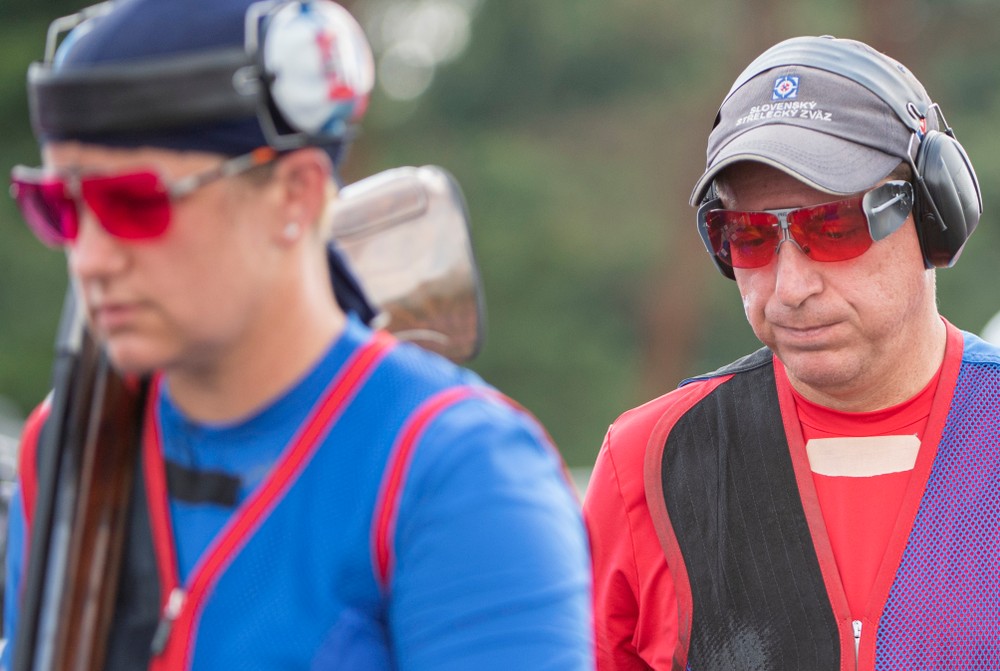TOKYO. The bronze was very, very close, but he finally flew away at Asaka’s shooting range. Slovak representatives in sport shooting Zuzana Rehak Stefecekova a Erik Varga they finished fourth in the mix trap discipline at the Tokyo Olympics.
In a thrilling battle for third place, Ann Bernau and Brian Burrows lost to the American duo Madelynn in a dramatic shootout.
The Spaniards Fatima Galvez and Alberto Fernandez are looking forward to gold, beating Alessandra Perilli and San Marco Berti in San Marino.
–
Break in the last series
There was a huge disappointment on the face of Zuzana Rehák Štefečeková. The Olympic champion did not get out of the trap of the bronze medal at all. If it could still be undone …
The medal duel was very even from the beginning. Until the eleventh series, the Americans were one step ahead of the Slovak couple.
But then, until then, quite accurate Bernau hesitated three times in quick succession and Varga and Rehák Štefečeková gradually got into a comfortable lead.
After 40 shots, the score was 36:33 for the Slovaks.
–
However, the last series did not work for them at all. Varga missed once and Rehák Štefečeková even three times. The Americans could end the fight with their last shot, but Bernau did not manage and did not hit the moment.
After 50 shots, a 42:42 draw shone on the board. The medal had to be decided by a shootout in which the Slovak was the first to make a mistake. Not an American anymore.
“I think we did a great job. Zuzka was pulling when needed and it was the other way around. We lacked luck. Maybe if we didn’t change the rules during the Olympic quarter, it would have turned out differently,” Varga told RTVS.
He bumped into the fact that previously the six best pairs from the qualification competed for medals, now the first two teams advanced directly to the finals for gold and the other two teams to compete for bronze.
The second Slovak pair Marián Kovačócy and Jana Špotáková took eighth place in the qualification.
–
Shooting news
Mix trap is a very young shooting discipline. The International Shooting Federation ISSF has interrupted this innovation before the 2016 Olympic Games in Rio.
Rehák Štefečeková and Varga triumphed at the 2015 European Games in Baku, and the discipline premiered at the 2017 World Championships in Moscow.
The reason is simple. Five circles have been hit by a wave of emancipation, which is breaking the long-established tradition.
In an effort to achieve women’s equality, the Olympic authorities are pushing new women’s sports or various mixed competitions into the program. Not even the shooting was left out.
After the Olympic Games in Rio, any 50-meter pistol, any 50-meter small-bore rifle and a double trap dropped out of the men’s Olympic program.
They were replaced by mixed competitions in an air rifle, an air pistol and a trap. Three years later, a fourth mix could be added – a skeet.
–
Fifty-fifty in Paris
Not a single woman took part in the premier modern Olympic Games in Athens in 1896.
In Paris in 1900, women were already allowed to compete, but there were only 22 of the 997 participants in the games and they could compete for medals in only five selected “women’s” sports – tennis, yachting, croquet, horse riding and golf.
One hundred years later, at the Sydney Olympics, women already made up 38% of the participants, in London 2012 it was 44.2%, in Rio 2016 exactly 45% and in Tokyo it is already 48.8%.
For the first time, women compete for the first time in the C1 discipline on wild water (at the expense of the men’s C2, note), or in swimming for 1,500 in a free way (so far their longest track was 800 meters).
Olympic gender evolution should be completed in Paris in 2024, where for the first time the same number of female and female athletes are expected.
Tokyo Summer Olympics 2020/2021
–


